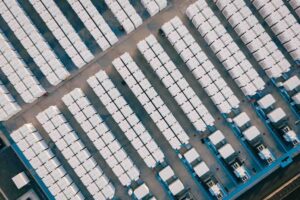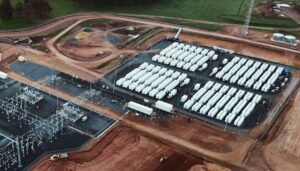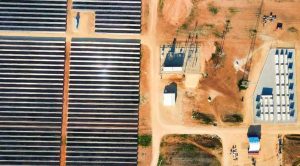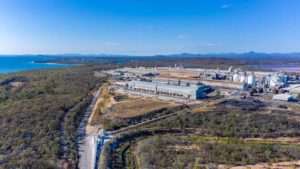The state of Queensland appears ready to embark on what could be one of the most radical transformations of its electricity network ever undertaken – even by standards of ambitious mandates in places such as California, Germany and Denmark.
The newly elected state Labor government came into power with a policy for 50 per cent renewable energy by 2030. That may have sounded radical at the time, but in the context of the upcoming climate talks in Paris, and the pledges being made at a global, national and sub-national level, it now seems less so.
But that’s not to underestimate the challenge of what it proposes. If the Labor government holds true to that promise, that will require around 25,000GWh of renewable energy by that time, or the construction of up to 7,000MW of renewable energy capacity in just 15 years.
Much of that capacity will likely come in the form of solar energy – both on the rooftops of homes and businesses, and in large utility-scale ground mounted arrays. It could include some of the biggest and most innovative projects in the world: the Sunshine State may just emerge as Australia’s principal Solar State.
It will also include some large wind energy projects – a sector that has by-passed the state in the recent renewable energy surge across Australia. And it will likely include some biomass and other innovative projects too.
Queensland has been a flash point in the climate and clean energy debate, mostly because of the proposed mega-coal mining projects in the Galilee Basin, and the massive infrastructure in rail and port infrastructure, and its potential on the Great Barrier Reef. It is also home to several huge liquefied natural gas projects.
But if Paris gives the investment signal that is expected towards a rapid decarbonisation of the global economy, then it is in renewable energy that the state may make its mark.
Queensland Energy Minister Mark Bailey, in an interview with RenewEconomy for this special Queensland report, says Labor is still committed to its ambitious renewable energy target, although it is taking a cautious approach.
Within a few weeks, Bailey says he expects to name an expert panel to provide advice on how it should reach its target.
“The Palaszczuk Government has set a priority of unlocking the state’s renewable energy resource potential and establishing Queensland as a renewable energy leader,” Bailey says. (Read the full interview here).
One of his first priorities will be unlocking the potential of large scale solar, virtually ignored in the state up to now. And the state plans, at least in the short term, to follow the example of the ACT and use a reverse auction process to get some projects underway. Plans for a 60MW auction are already being put in place.
“We have certainly seen the successes of the ACT auctions and are keen to replicate that and go further,” Bailey says. “Queensland is a big state with some of the best solar resources in the world, and is ideally placed to benefit as solar generation becomes an increasingly important part of Australia’s electricity generation.
“We have been out of the picture for large scale solar under the previous (Newman-led LNP) government and we have been rectifying that.”
Bailey has also established a new Queensland-based Productivity Commission to investigate, among other things, a “fair price” on solar.
As Bailey notes, and the solar industry has been pointing out for several years, most regulatory assessments on a fair price of solar focus on the “costs” of rooftop solar, but not its benefits – either to lowering wholesale prices, deferring or reducing peak loads, or its environmental credentials.
“This is a topic that has been examined many times – but not with an effort to explicitly include those broader benefits,” Bailey says.
About two thirds of solar households in the state benefit from the premium feed in tariffs that will last until 2028, but the review of solar tariffs (payment for exports to the grid) for other users, and those yet to add solar, is seen as crucial – not just for the progress of rooftop solar in the state, but also for battery storage, and most likely the business models of the state-owned network operators.
Queensland is already a state of records. It hosts the biggest amount in aggregate terms of rooftop solar in the country – a total of more than 1.45GW. Within a year, it will mean that rooftop solar will overtake the Stanwell and Tarong coal fired power stations as the large generator in the state.
And if the dreams of developers come to fruition, Queensland is likely to hold some other records:
It could play host to the largest combined wind and solar hybrid plant in the world. The Kennedy wind park, its promoters Widnlab and Japan’s Eurus say, could total 1,200MW, and be able to supply “base load” energy to meet nearly all the requirements of north Queensland.
It could play host to the biggest combined pumped hydro and utility scale solar plant in the world. Genex intends to turn a disused gold mine, Kidston, into a 300MW pumped hydro plant, topped with a 150MW solar system on its old tailings site.
It could also play host to the largest solar plant in the world. Solar Choice, with its partner SunEdison, is looking to build a 2GW solar plant in the south of the state, although it will certainly be build in stages.
Ergon Energy, the state owned utility, can lay claim to being the biggest grid with the lowest population density in the world. It covers 97 per cent of the state and has on average 4 customers per kilometre. That provides massive challenges, and huge opportunities, both in innovation and in grid transformation.
As Ergon CEO Ian McLeod says in an interview (and you can read more of that here) that if the network operator were to start over, it would take a different take, focusing on the new technologies of the day – and that would mean fewer poles and wires, and less redundancy in the system.
“Today, we would look at hybrid, storage and renewable options, perhaps with some back-up,” McLeod says. Ultimately that would result in a cheaper grid than has already been built. The big task is how to effect the transition, considering that the grid has already been built.
“We have to apply the technology where it makes sense and integrate the new technology into the extremities of the network, pull back from the edges, use storage, tariffs and price signals to reduce our spend on network augmentation by sharing and increasing utilisation of available resources,” McLeod says.
There are a couple of reasons why Queensland may be able to achieve this transformation and accommodate this massive investment in renewable energy.
The first is that it has excellent solar resources, which are barely untapped at utility scale.
Despite being the country leader in rooftop solar, there is little in the way of utility scale solar built to date – although the government’s 60MW solar auction, the 150MW of capacity auction by Ergon Energy, and the tender being conducted by ARENA could change that.
There are reasons for the industry to be positive about solar in Queensland. Because of its booming LNG industry, Queensland is the only state forecast to have increased demand and possibly the need for new generation over the next decade.
An analysis by Bloomberg New Energy Finance suggested that the price of renewable energy certificates to make solar work in Queensland may be significantly lower than for wind energy in other states.

The state also has a largely untapped wind resource: its only wind farm to date is the 12MW Windy Hill wind farm (pictured here charging up a Tesla Model S). But there are plenty of other projects in the pipeline.
It also has a largely untapped resource of potential bio-mass generation, as well as the hydro opportunities identified by the likes of Genex. And ironically, due to the massive demands of the huge LNG export plants coming on line, it is the only state in Australia with a profile of increased demand, rather than falling or static demand.
This is part of a series of articles on Queensland sponsored by Norton Rose Fulbright. For the others in the series, please click here. and also visit Norton Rose Fulbright’s COP21 coverage.










